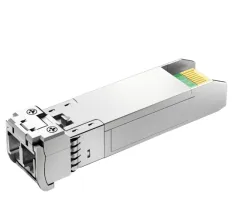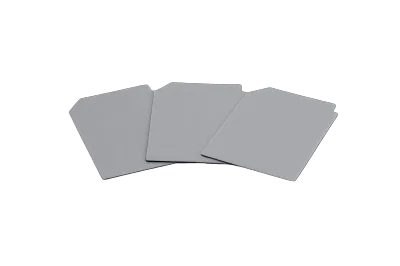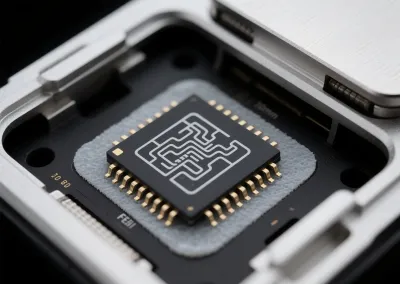
From "Invisible Killer" to "Reliable Shield": Silicon-Free Materials End the Problem of Silicone Oil Contamination
In the field of high-speed optical communications, over 65% of early failure optical modules suffer from optical interface contamination, which stems from silicone oil precipitated from traditional silicon-containing thermal conductive materials at high temperatures, leading to optical path attenuation. Moreover, as the power density of optical modules increases, the volatilization rate of silicone oil doubles for every 10°C rise in operating temperature. This problem is more prominent in 800G and higher-rate optical modules. The MTBF (Mean Time Between Failures) of optical modules using silicon-containing materials at high temperatures is nearly 40% shorter than those using silicon-free materials. However, Sheen's AF series silicon-free thermal conductive pads, with their characteristic of no silicone oil precipitation, have become a key solution to this problem and have demonstrated excellent reliability in tests by multiple leading optical module manufacturers.The Game Between Softness and Hardness: Ultra-Soft Characteristics Reconstruct Interface Heat Conduction Efficiency
Traditional thermal conductive pads, due to their high hardness, are difficult to fill the micro-gaps formed by the ±50μm height tolerance of heating elements in optical modules, resulting in an actual contact area of less than 60% of the designed value, which affects heat dissipation. In contrast, Sheen's AF series ultra-soft silicon-free thermal conductive pads have a Shore 00 hardness as low as below 50, which is comparable to the softness of human skin. They can achieve over 95% interface fit under a pressure of 0.5kg/cm², and the contact thermal resistance is 58% lower than that of traditional materials. This is crucial for COB (Chip On Board) packaging that requires precise control of assembly stress, as it can avoid chip cracking or gold wire breakage caused by excessive pressure.
From Performance Breakthrough to Cost Reversal: Silicon-Free Materials Rewrite Industry Rules
A 15W/mK silicon-free thermal conductive pad launched by an international major manufacturer, benefiting from innovations in materials science, adopts a composite structure of vertically arranged boron nitride nanosheets and graphene, constructing an efficient heat conduction channel in the thickness direction. Additionally, the special surface micro-scale convex design enables the material to better expel interface air when compressed, controlling the contact thermal resistance below 0.03cm²·K/W. In 800G optical module applications, it can reduce the laser junction temperature by 12-15°C, extending the device lifespan by more than 3 times. Its performance stability far exceeds that of traditional materials. After 1000 temperature cycles from -40°C to 125°C, the thermal resistance increase is no more than 10%, while that of ordinary silicone pads is as high as 120%. The Sheen team is also developing products with higher thermal conductivity to meet the heat dissipation needs of future 1.6T optical modules.Although the initial cost of silicon-free thermal conductive pads is relatively high, the total lifecycle cost is more optimal. According to calculations by a certain equipment manufacturer, for 800G optical modules using high-end silicon-free thermal conductive pads, within a 5-year operation cycle, the maintenance cost can be saved by approximately 15 dollars per module due to a 60% reduction in repair rates, the capital expenditure can be delayed by about 8 dollars per module due to the extended lifespan of lasers, and the manufacturing cost can be saved by around 5 dollars per module due to the improved production line yield. Comprehensively, a 12% cost advantage is achieved. Sheen's AF series products help customers improve their return on investment with long-term stability.

Silicon-Free Thermal Conductive Materials: The Future Fulcrum for Prying Next-Generation Optical Communication Heat Dissipation
As optical modules evolve towards the CPO (Co-Packaged Optics) architecture, the next generation of silicon-free thermal conductive materials will have three major development trends: extreme thickness reduction, developing ultra-thin thermal interface materials below 50μm to adapt to chip-level packaging; functional integration, having multiple functions such as electromagnetic shielding and stress buffering; and manufacturing precision, being capable of photolithographic forming and deeply compatible with semiconductor processes. The Sheen R&D team is cooperating with multiple silicon photonics chip manufacturers to explore solutions for directly integrating thermal conductive structures on the chip surface, providing key heat dissipation solutions for future 1.6T and higher-rate optical modules.
In the process of the optical communication industry pursuing higher transmission rates, heat dissipation technology becomes increasingly important. The emergence of ultra-soft silicon-free thermal conductive pads not only solves specific technical problems but also indicates that material innovation may become a new engine for industry development. Leading enterprises such as Sheen continue to make technological breakthroughs to help the industry overcome heat dissipation bottlenecks. These breakthroughs in basic materials may be the key watershed for the success or failure of next-generation optical communication technologies.
In the process of the optical communication industry pursuing higher transmission rates, heat dissipation technology becomes increasingly important. The emergence of ultra-soft silicon-free thermal conductive pads not only solves specific technical problems but also indicates that material innovation may become a new engine for industry development. Leading enterprises such as Sheen continue to make technological breakthroughs to help the industry overcome heat dissipation bottlenecks. These breakthroughs in basic materials may be the key watershed for the success or failure of next-generation optical communication technologies.

 English
English
 usheenthermal
usheenthermal



